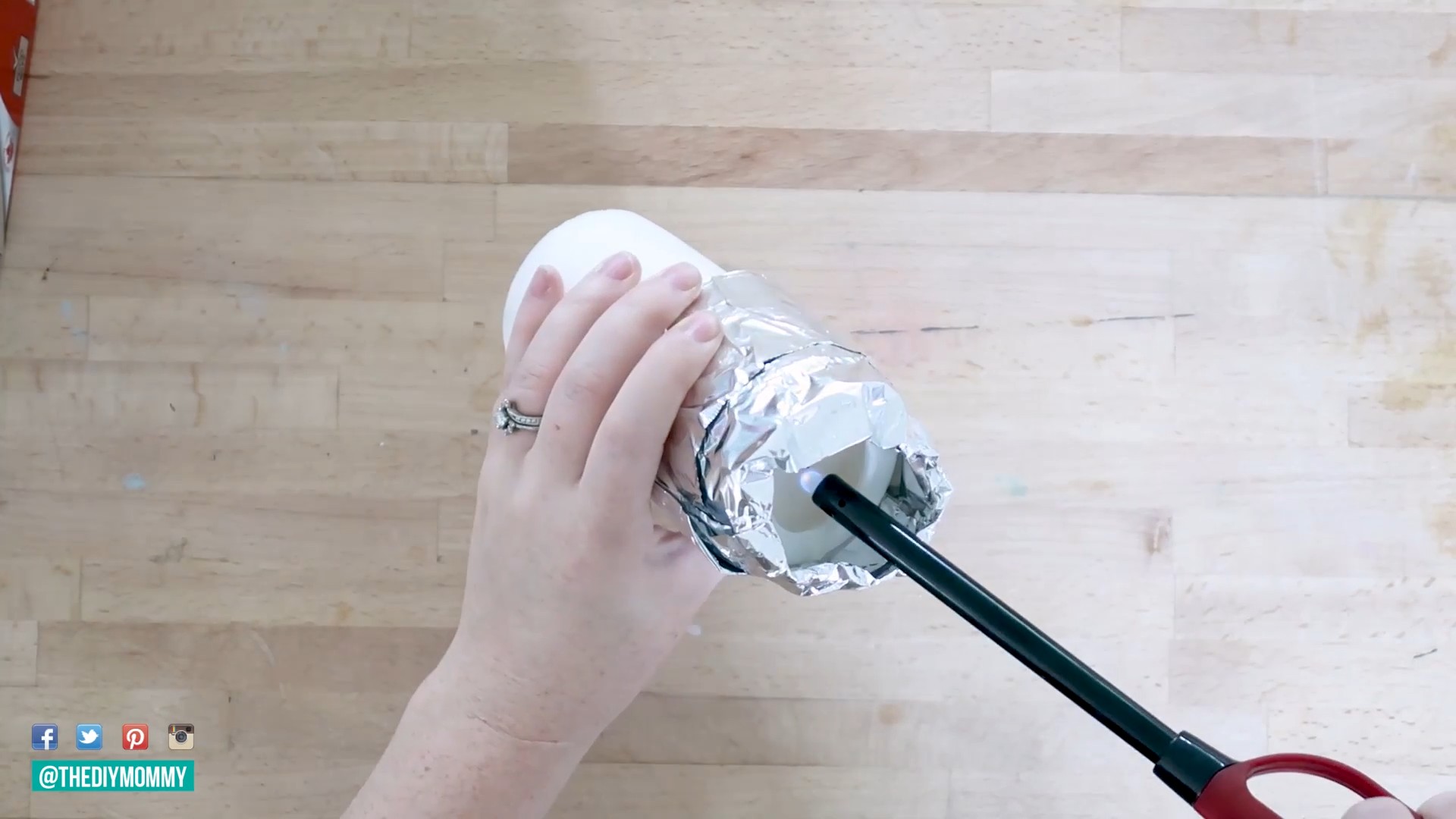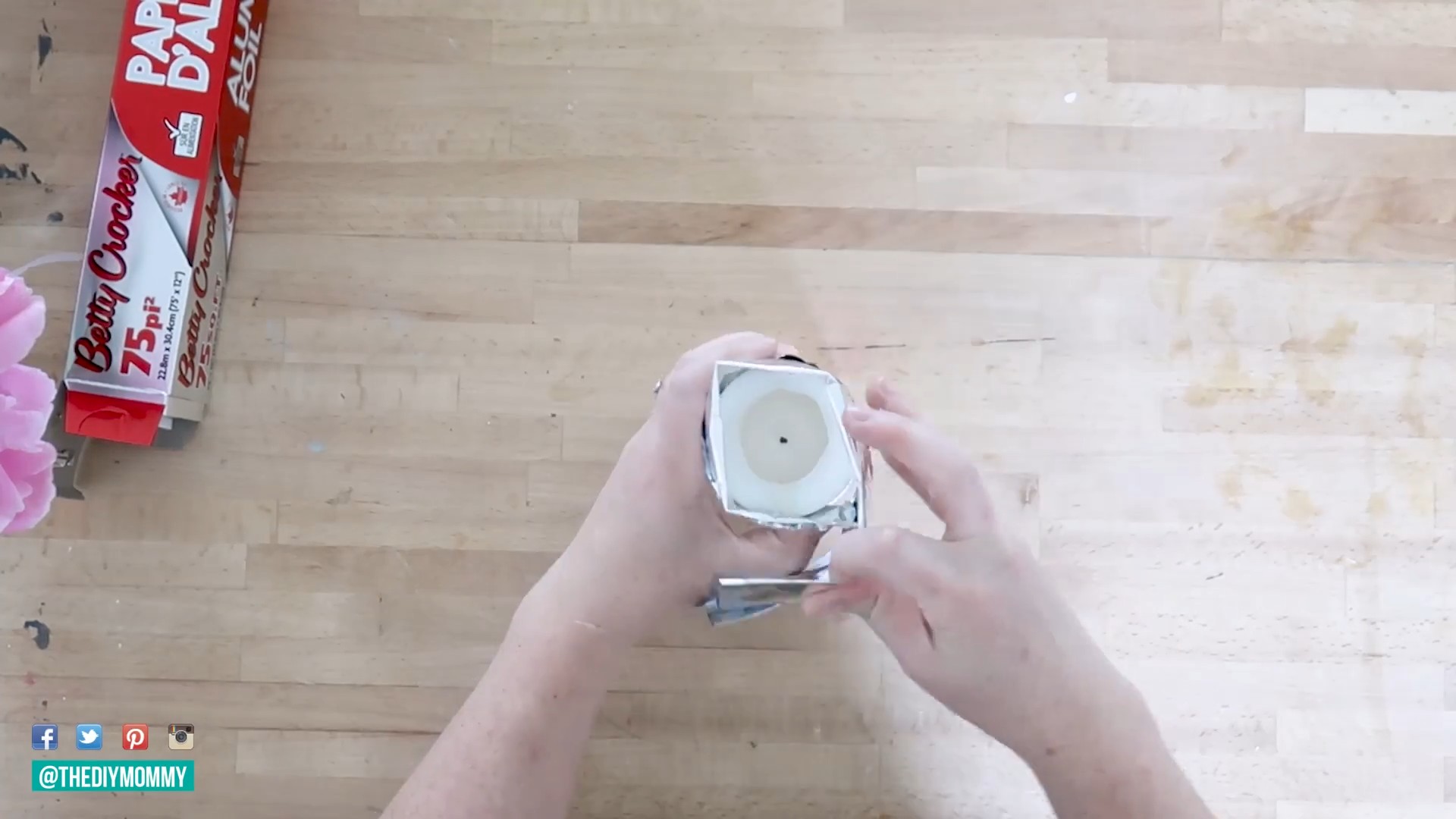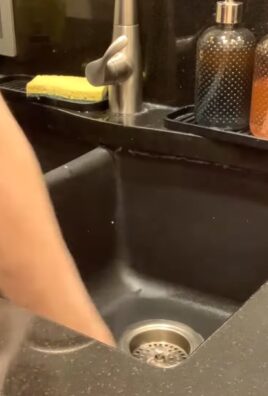Home life easy tricks are the secret weapon every homeowner needs to conquer daily challenges and create a more enjoyable living space. Let’s face it, managing a home can feel like a never-ending to-do list, but what if I told you there were simple, clever solutions right at your fingertips?
From ancient civilizations utilizing natural remedies for cleaning to modern-day minimalist movements embracing decluttering, the quest for an easier home life has been a constant throughout history. We’ve always sought ways to streamline our routines and maximize our comfort. And that’s exactly what this article is all about!
In today’s fast-paced world, time is precious. Who wants to spend hours scrubbing, organizing, or struggling with everyday household tasks? That’s where these home life easy tricks come in. I’m going to share some of my favorite DIY hacks and clever solutions that will save you time, money, and a whole lot of stress. Imagine having more free time to relax, pursue your hobbies, or simply enjoy your beautiful, well-organized home. Ready to transform your home life? Let’s dive in!

DIY Home Hack: Transforming Old T-Shirts into Reusable Shopping Bags
Hey everyone! I’m super excited to share one of my favorite DIY projects with you – turning old t-shirts into reusable shopping bags. Not only is this a fantastic way to reduce waste and be more eco-friendly, but it’s also a super fun and easy craft project. Plus, you get a unique, personalized shopping bag out of it! Let’s dive in!
What You’ll Need:
Before we get started, let’s gather our supplies. This is a pretty low-key project, so you probably already have most of this stuff lying around:
* **An Old T-Shirt:** The bigger, the better! A larger shirt will give you a larger bag. Avoid shirts with delicate fabrics or lots of holes (unless you’re going for a *very* distressed look!).
* **Sharp Scissors:** Fabric scissors are ideal, but any sharp scissors will do.
* **A Ruler or Measuring Tape:** This will help you make straight lines, but you can eyeball it if you’re feeling brave.
* **A Plate or Bowl (Optional):** For tracing a rounded neckline.
* **Pins (Optional):** To hold the bottom edges together while you cut.
* **Sewing Machine or Needle and Thread (Optional):** For reinforcing the bottom seam. This is highly recommended if you plan on carrying heavy items.
* **Fabric Marker or Chalk (Optional):** For marking cutting lines.
Step-by-Step Instructions:
Okay, let’s get started! Follow these steps, and you’ll have your own reusable t-shirt bag in no time.
1. **Prepare Your T-Shirt:** Lay your t-shirt flat on a clean, even surface. Smooth out any wrinkles. Make sure the front of the shirt is facing up.
2. **Cut Off the Sleeves:** Using your scissors, carefully cut off both sleeves. Try to follow the existing seam as closely as possible for a clean look. I like to cut just inside the seam, leaving a little extra fabric. Don’t worry if it’s not perfect; we’re going for rustic charm here!
3. **Modify the Neckline (Optional):** This step is optional, but I usually prefer a wider opening for my bag. You can either leave the neckline as is, or you can cut it into a wider scoop neck or even a tank top style.
* **For a Scoop Neck:** Place a plate or bowl on the neckline, using it as a guide to trace a curved line with your fabric marker or chalk. Then, carefully cut along the line.
* **For a Tank Top Style:** Cut straight across from the top of one armhole to the top of the other, removing the entire neckline.
4. **Create the Fringe (Bottom of the Bag):** This is where the magic happens! We’re going to create a fringe along the bottom edge of the t-shirt, which we’ll then tie together to create a sealed bottom for our bag.
* **Mark Your Cutting Line:** Using your ruler or measuring tape, measure up about 3-4 inches from the bottom hem of the shirt. This will be the length of your fringe. Use your fabric marker or chalk to draw a straight line across the bottom of the shirt at this measurement. This line will serve as a guide for how far up to cut the fringe.
* Why 3-4 inches? This gives you enough length to tie the fringe securely.
* **Cut the Fringe:** Now, start cutting vertical strips from the bottom hem up to the line you just drew. Make each strip about 1 inch wide. Try to keep the strips as even as possible, but don’t stress too much about perfection.
* Tip: If you’re having trouble cutting straight lines, you can fold the shirt in half lengthwise and cut through both layers at the same time. This will ensure that the fringe is even on both sides.
5. **Tie the Fringe:** This is the most important step! We’re going to tie the fringe together to create a sealed bottom for the bag.
* **Tie the Knots:** Take two adjacent strips of fringe and tie them together in a tight knot. Make sure the knot is close to the bottom of the strips. Repeat this process all the way across the bottom of the shirt, tying each pair of adjacent strips together.
* Second Row of Knots:** Now, tie each knot to the knot next to it. This will create a more secure and durable bottom for your bag.
* Important: Make sure you tie the knots tightly! This will prevent the bottom of the bag from coming undone when you’re carrying heavy items.
6. **Reinforce the Bottom (Optional but Recommended):** For extra durability, especially if you plan on carrying heavy items, I highly recommend reinforcing the bottom of the bag. You can do this with a sewing machine or by hand.
* **Using a Sewing Machine:** Turn the bag inside out. Sew a straight line across the bottom of the bag, just above the fringe. You can sew multiple lines for extra reinforcement.
* **Sewing by Hand:** Use a needle and thread to sew a running stitch or a backstitch across the bottom of the bag, just above the fringe. Again, you can sew multiple rows for extra reinforcement.
7. **Trim the Fringe (Optional):** If you want a neater look, you can trim the fringe to make it even. Use your scissors to trim the ends of the fringe to your desired length.
8. **Turn it Right Side Out:** Turn your bag right side out, and you’re done! You now have a reusable shopping bag made from an old t-shirt.
Adding Extra Flair (Optional):
Want to personalize your bag even more? Here are a few ideas:
* **Fabric Paint:** Use fabric paint to add designs, patterns, or your name to the bag.
* **Iron-On Transfers:** Iron-on transfers are a great way to add images or logos to your bag.
* **Embroidery:** If you’re feeling crafty, you can embroider designs onto the bag.
* **Buttons and Beads:** Sew on buttons or beads for a unique and eye-catching look.
* **Dyeing:** Dye the t-shirt before you start to create a bag in your favorite color.
Tips and Tricks:
* Choose the Right T-Shirt:** Thicker t-shirts will create more durable bags.
* Tie the Knots Tightly:** This is crucial for preventing the bottom of the bag from coming undone.
* Reinforce the Bottom:** Especially if you plan on carrying heavy items.
* Get Creative!:** Don’t be afraid to experiment with different designs and embellishments.
* Practice Makes Perfect:** The more bags you make, the better you’ll get at it!
Troubleshooting:
* **Fringe Coming Undone:** If the fringe starts to come undone, simply re-tie the knots. You may also want to reinforce the bottom with a sewing machine or needle and thread.
* **Bag Stretching Out of Shape:** Avoid carrying excessively heavy items in the bag. If the bag stretches out of shape, you can try washing and drying it to shrink it back to its original size.
* **Uneven Fringe:** Don’t worry too much about uneven fringe. It adds to the rustic charm of the bag. However, if you really want to even it out, you can trim it with scissors.
Benefits of Using Reusable Shopping Bags:
* Reduces Waste:** Reusable shopping bags help to reduce the amount of plastic waste that ends up in landfills and oceans.
* Saves Money:** Many stores offer discounts or incentives for customers who bring their own bags.
* Eco-Friendly:** Reusable shopping bags are a more sustainable alternative to plastic bags.
* Stylish:** You can create your own unique and stylish reusable shopping bags that reflect your personality.
Conclusion:
So there you have it! A super easy and fun way to turn old t-shirts into reusable shopping bags. I hope you enjoyed this DIY project. Happy crafting!

Conclusion
So, there you have it! This simple yet effective DIY trick is more than just a time-saver; it’s a game-changer for streamlining your home life and reclaiming precious moments. We’ve shown you how to transform a mundane task into something almost effortless, and the benefits extend far beyond mere convenience. Think of the reduced stress, the increased efficiency, and the satisfaction of knowing you’ve mastered a clever solution.
Why is this a must-try? Because it addresses a common frustration with a surprisingly elegant solution. It’s about working smarter, not harder, and creating a more harmonious and enjoyable home environment. It’s about taking control and making your space truly work for you.
But don’t stop there! The beauty of this DIY trick lies in its adaptability. Feel free to experiment with variations to suit your specific needs and preferences. For instance, if you’re dealing with particularly stubborn stains, consider adding a touch of baking soda to your cleaning solution for extra scrubbing power. Or, if you prefer a more natural approach, try using vinegar and essential oils for a fresh and invigorating scent.
Consider these variations:
* **For delicate surfaces:** Dilute your cleaning solution further to prevent any potential damage.
* **For larger areas:** Scale up the recipe accordingly, ensuring you have enough solution to cover the entire surface.
* **For specific cleaning needs:** Research complementary ingredients that target particular types of grime or stains.
Ultimately, the goal is to customize this DIY trick to perfectly fit your lifestyle and cleaning habits. Don’t be afraid to get creative and experiment until you find the perfect formula that works for you.
We are confident that once you try this DIY trick, you’ll wonder how you ever lived without it. It’s a simple yet powerful tool for creating a more organized, efficient, and enjoyable home life.
Now, it’s your turn! We encourage you to give this DIY trick a try and share your experience with us. Let us know what variations you’ve discovered, what challenges you’ve overcome, and what successes you’ve achieved. Your feedback is invaluable and helps us refine and improve our tips for the benefit of the entire community.
Share your photos, videos, and stories on social media using #HomeLifeHacks and #EasyCleaning. We can’t wait to see how you’re transforming your home life with this simple yet effective DIY trick. Let’s create a community of empowered homeowners who are taking control of their spaces and enjoying the benefits of a more streamlined and efficient lifestyle.
Frequently Asked Questions
Q: What exactly is the “DIY trick” this article refers to?
A: This article focuses on a simple, homemade cleaning solution and method designed to make household cleaning easier and more efficient. While the specific recipe would be detailed in the main body of the article (which is not included here), the core concept revolves around using readily available household ingredients to create a powerful and versatile cleaning agent. The goal is to provide a cost-effective and eco-friendly alternative to commercial cleaning products.
Q: What kind of surfaces can I use this DIY cleaning solution on?
A: The suitability of the cleaning solution depends on the specific ingredients used in the recipe. However, as a general guideline, it’s crucial to test the solution on an inconspicuous area first to ensure it doesn’t damage or discolor the surface. Common surfaces that are often safe for DIY cleaning solutions include:
* **Countertops:** Granite, quartz, laminate (test first!)
* **Floors:** Tile, linoleum, sealed hardwood (test first!)
* **Appliances:** Stainless steel, enamel
* **Bathroom fixtures:** Sinks, toilets, showers (avoid abrasive ingredients on delicate surfaces)
* **Glass and mirrors:** Use a diluted solution to prevent streaking
Avoid using the solution on porous surfaces like unsealed wood or natural stone without careful consideration and testing. Always err on the side of caution.
Q: Are there any safety precautions I should take when making and using this DIY cleaning solution?
A: Absolutely! Safety is paramount when working with any cleaning solution, even homemade ones. Here are some essential precautions:
* **Wear gloves:** Protect your skin from potential irritation.
* **Ensure proper ventilation:** Work in a well-ventilated area to avoid inhaling fumes.
* **Keep out of reach of children and pets:** Store the solution in a clearly labeled container and out of reach of children and pets.
* **Never mix with bleach:** Mixing certain cleaning agents, especially with bleach, can create dangerous and toxic fumes.
* **Test on an inconspicuous area:** Before applying the solution to a large surface, test it on a small, hidden area to ensure it doesn’t cause any damage or discoloration.
* **Read the labels of all ingredients:** Be aware of any potential hazards associated with the individual ingredients you are using.
Q: Can I add essential oils to this DIY cleaning solution? If so, which ones are recommended?
A: Yes, adding essential oils can enhance the cleaning power and scent of your DIY solution. Many essential oils possess antibacterial, antiviral, and antifungal properties, making them excellent additions to a cleaning formula. Some popular and effective choices include:
* **Tea tree oil:** Known for its strong antibacterial and antifungal properties.
* **Lavender oil:** Offers a calming scent and has antiseptic properties.
* **Lemon oil:** A natural degreaser and disinfectant with a refreshing citrus scent.
* **Eucalyptus oil:** Has antibacterial and antiviral properties and a refreshing scent.
* **Peppermint oil:** Provides a refreshing scent and can help deter pests.
When adding essential oils, start with a few drops and adjust to your preference. Be mindful of potential allergies or sensitivities.
Q: How long will this DIY cleaning solution last?
A: The shelf life of your DIY cleaning solution depends on the ingredients used. Solutions containing water are more prone to bacterial growth and should be used within a few weeks. Solutions with a high concentration of vinegar or alcohol tend to last longer.
To maximize the shelf life, store the solution in a clean, airtight container in a cool, dark place. Label the container with the date it was made. If you notice any changes in color, odor, or consistency, discard the solution.
Q: What if I don’t have all the ingredients listed in the recipe? Can I substitute them?
A: Depending on the ingredient, substitutions may be possible. However, it’s essential to understand the purpose of each ingredient before making a substitution. For example, vinegar can often be substituted with lemon juice, as both are acidic. However, baking soda and borax have different chemical properties and cannot be directly substituted for each other.
If you’re unsure about a substitution, it’s best to research the properties of the ingredient you’re trying to replace and find a suitable alternative with similar characteristics. When in doubt, it’s always better to stick to the original recipe.
Q: My DIY cleaning solution is leaving streaks on my surfaces. What am I doing wrong?
A: Streaking can occur for several reasons. Here are some common causes and solutions:
* **Too much solution:** Use a smaller amount of solution and wipe the surface dry with a clean cloth.
* **Hard water:** Hard water can leave mineral deposits that cause streaks. Try using distilled water to make your cleaning solution.
* **Dirty cloth:** Use a clean microfiber cloth to wipe the surface.
* **Residue from previous cleaners:** Thoroughly clean the surface to remove any residue from previous cleaning products.
* **Incorrect dilution:** Ensure you are diluting the solution properly according to the recipe instructions.
Q: Can this DIY cleaning solution be used to clean my oven?
A: While some DIY cleaning solutions can be used to clean ovens, it’s essential to proceed with caution. Avoid using solutions containing ammonia or harsh chemicals, as these can damage the oven’s interior. A paste made from baking soda and water is a popular and effective DIY oven cleaner. Apply the paste to the oven’s interior, let it sit overnight, and then scrub it clean. Always consult your oven’s manual for specific cleaning recommendations.
Q: I have sensitive skin. Are there any ingredients I should avoid in this DIY cleaning solution?
A: If you have sensitive skin, it’s best to avoid ingredients that are known to cause irritation, such as:
* **Strong acids:** Vinegar and lemon juice can be irritating to sensitive skin. Use diluted solutions or consider alternatives.
* **Essential oils:** Some essential oils can cause allergic reactions or skin irritation. Test a small amount on your skin before using them in your cleaning solution.
* **Dyes and fragrances:** Avoid adding artificial dyes or fragrances to your cleaning solution, as these can be common irritants.
Always wear gloves when using any cleaning solution, and rinse your hands thoroughly after use. If you experience any skin irritation, discontinue use and consult a dermatologist.





Leave a Comment